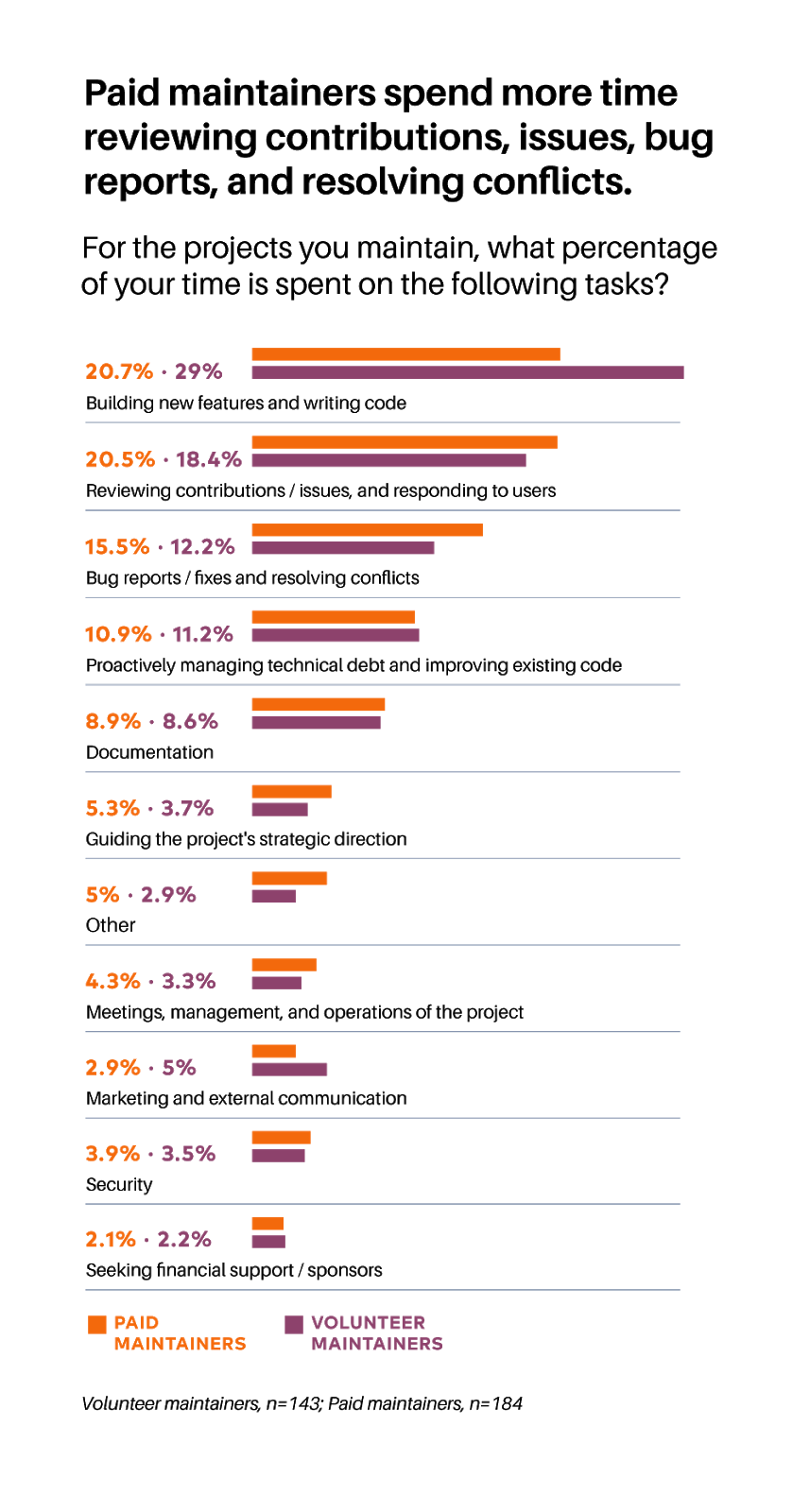In early 2021, Tidelift fielded its first-ever comprehensive survey of open source maintainers. Nearly 400 maintainers responded with thoughts about how they fund their work, what they enjoy about being a maintainer, what they don’t like so much, along with a host of other interesting insights. In this post, we share the sixth of nine key findings. If you don’t want to wait for the rest of the results, you can download the full survey report right now.
We asked maintainers to break down the percentage of their time they spend on a variety of tasks, and found some surprising results.
While maintainers spend more time building new features and writing new code than anywhere else, it still makes up less than a quarter (24%) of their time.
So how do they spend the rest of their time?
Reviewing contributions, issues, and generally responding to users takes about 20% of their time. Resolving conflicts and handling bugs accounts for another 14%, and managing technical debt and improving existing code consumes 11% of the relevant time.
 Non-technical tasks take up most of the remaining project-related time, with documentation (8.7%) usually consuming more hours than marketing (3.8%) and meetings (3.9%) combined.
Non-technical tasks take up most of the remaining project-related time, with documentation (8.7%) usually consuming more hours than marketing (3.8%) and meetings (3.9%) combined.
In the category of “beware of what you wish for,” paid maintainers spend only 21% of the relevant time writing code. In contrast, 29% of volunteer maintainers’ project time goes to writing new code. How does that happen?
Paid maintainers are likely working on more complex projects where they have more end users, more contributors, and more demands on their time. In these instances, outward-facing responsibilities can mean less time left for writing code. Paid maintainers spend more of their time reviewing other people’s contributions and issues, bug fixes, resolving conflicts, and guiding the project’s strategic direction.
Meanwhile, volunteer maintainers might have more time to build features and write code, but they also need to spend significantly more of their time (5% vs. 2.9%) on marketing and external communication, as they try to ensure their projects gain traction.

So if these are the areas where maintainers are spending their time today, where is work not getting done and where are they crying out for more help? In our next post, we’ll uncover the answers.

 50 Milk St, 16th Floor, Boston, MA 02109
50 Milk St, 16th Floor, Boston, MA 02109